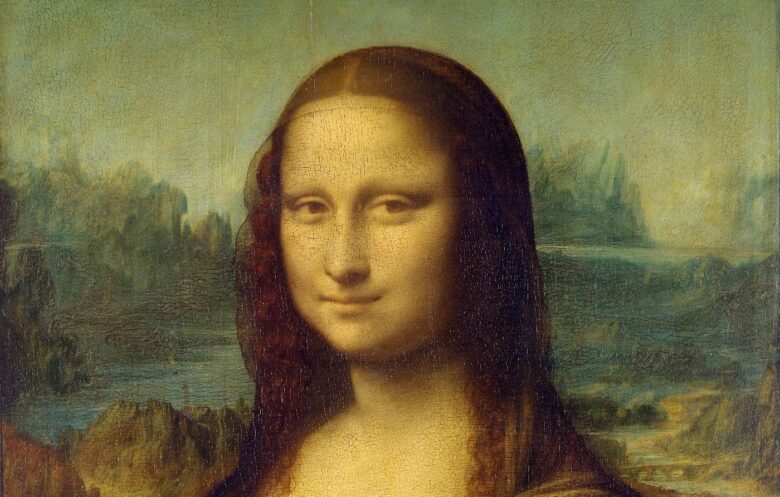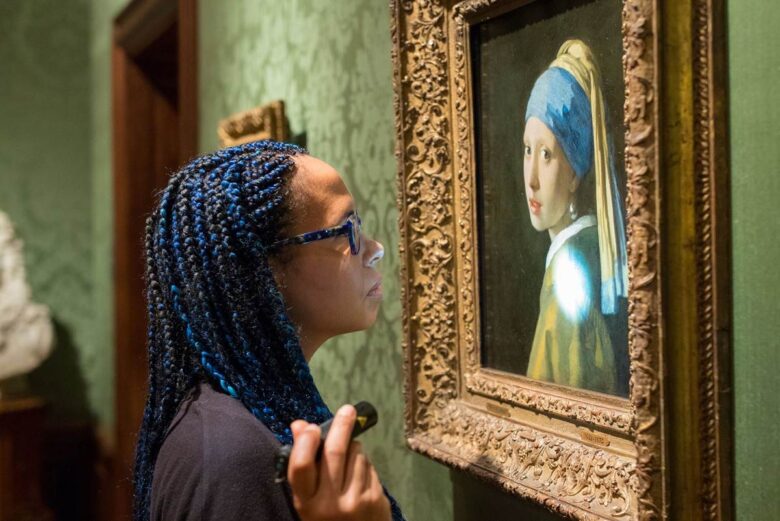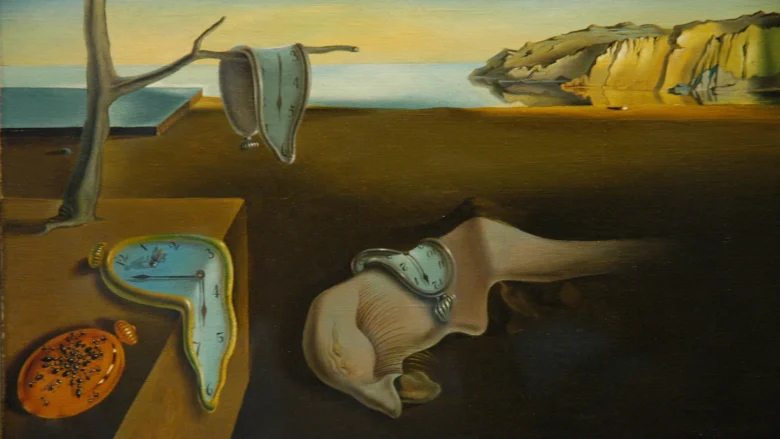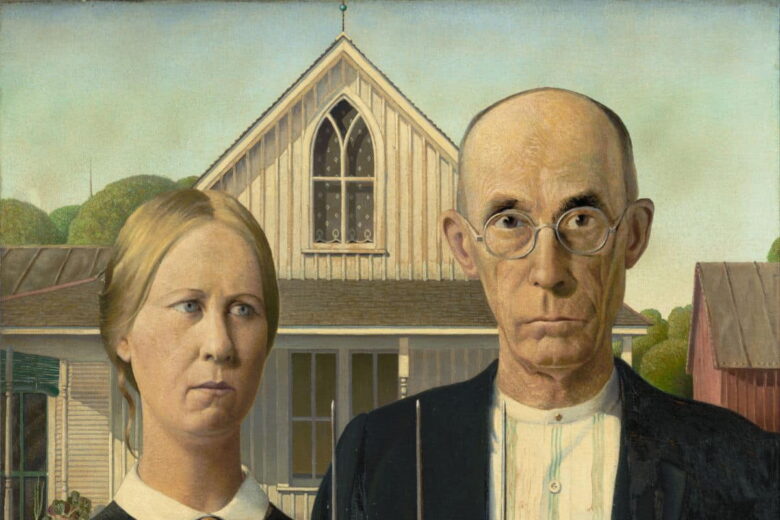Portraits have always held a unique place in our hearts and minds. They tell stories, preserve moments, and reveal truths that are often timeless. It’s like having a little piece of someone’s life captured in a single frame, staring back at you with secrets and stories from centuries ago.
And let’s face it, who doesn’t want to know what we can learn from the likes of the Mona Lisa, the Girl with a Pearl Earring, and all the other portraits that have somehow become celebrities in the art world? Let’s take a journey into some of the most iconic faces that have shaped art history.
Key Points:
- Mona Lisa’s smile teaches subtlety.
- Van Gogh’s self-portraits explore vulnerability.
- Girl with a Pearl Earring shows the power of mystery.
- The Arnolfini Portrait gives insights into symbolism.
- American Gothic provides lessons on cultural reflection.
Mona Lisa by Leonardo da Vinci

Everyone knows Mona Lisa, right? Her smile alone could be the topic of endless debate. It’s gentle, mysterious, and somehow both cheerful and somber at once. That subtle smile has sparked endless curiosity. What can we learn from her? Subtlety can have a massive impact.
In a world where loudness often steals the spotlight, Mona Lisa shows the art of whispering instead of shouting. Not every reaction needs to be over-the-top to be unforgettable. Sometimes, the slightest hint of expression says everything.
Van Gogh’s Self-Portraits: More Than Just a Face
Van Gogh is often remembered for his intense, almost haunting self-portraits. He painted himself more than 30 times, and each one exposes a different side of his struggle and identity. It’s raw, vulnerable, and a little bit heartbreaking. What we get from Van Gogh is honesty.
He didn’t try to hide his inner turmoil; he painted it. His portraits remind us that self-expression is about embracing imperfections. There’s a beauty in showing your flaws, and Van Gogh mastered it long before filters and Photoshop.
If you’re intrigued by the idea of creating something similarly meaningful, Families Portrait offers the chance to have your very own portrait drawn, preserving your personal details in a timeless format. Families Portrait combines artistry and precision to create a piece as unique as your story.
Girl with a Pearl Earring by Johannes Vermeer

Ever wondered why the Girl with a Pearl Earring has been called the “Mona Lisa of the North”? She’s mysterious, yet strangely approachable. Her expression leaves you wondering what she’s thinking, and that single pearl gleams like a tiny spotlight on her face.
What’s the takeaway here? Mystery. People are drawn to what they can’t fully understand. You don’t always have to reveal everything to be memorable. Sometimes, it’s what you leave unsaid—or unseen—that keeps people captivated.
The Arnolfini Portrait by Jan van Eyck
When you look at Jan van Eyck’s Arnolfini Portrait, it’s easy to get distracted by the crazy amount of detail. But look closer, and you’ll notice a ton of symbolism. The little dog, the oranges, the single candle—each element means something, often deeply personal to the people in the painting.
This work shows us how much meaning can be packed into a single frame. Every detail counts, and sometimes the smallest things can reveal the most about a person or situation. It’s a reminder to be thoughtful about the little things; they’re often the first clues people pick up on.
American Gothic by Grant Wood
American Gothic is that iconic painting of a man and woman standing in front of a farmhouse, pitchfork in hand. It’s often seen as a slice of Americana, capturing a moment of rural life with a certain sternness. But it also says something deeper about culture and perception.
Wood took inspiration from what he saw around him and reflected it back, giving us a chance to see a part of American culture through his eyes. American Gothic teaches us that art can serve as a mirror, reflecting the values, strengths, and even quirks of a culture.
Portrait of Adele Bloch-Bauer I by Gustav Klimt
Klimt’s Portrait of Adele Bloch-Bauer I, often known as the “Golden Adele,” is all about opulence. Rich with gold leaf and intricate patterns, it’s not just a painting; it’s a statement piece. Klimt brings luxury and elegance to the forefront, reminding us of the importance of boldness. Sometimes, subtlety is not the answer. Klimt’s work teaches us to embrace extravagance unapologetically and make a statement when the moment calls for it.
Lessons from Portraits Across Art History
What else can you learn from these classic pieces? Each portrait offers unique insights, whether it’s about conveying emotion, sparking curiosity, or presenting details that tell a story.
- Subtlety Matters: As seen with Mona Lisa, not every emotion has to scream. Sometimes the quietest expressions hold the deepest impact.
- Embrace Imperfection: Like Van Gogh, be authentic. You don’t need perfection to create something remarkable.
- Mystery Engages: Girl with a Pearl Earring teaches us to leave room for curiosity. A little mystery goes a long way.
- Detail Holds Meaning: Arnolfini Portrait proves that small details make a big difference. Don’t underestimate their power.
- Reflect Culture: American Gothic shows how art can mirror society, capturing the essence of a time or place.
FAQs
1. What makes a portrait unforgettable?

Unforgettable portraits have a mix of mystery, expression, and subtlety. They capture emotions or stories that viewers connect with on a deeper level.
2. Why are certain portraits so popular?
Some portraits are popular because they represent universal themes, emotions, or mysteries that resonate with people across different eras and cultures.
3. Can anyone have a portrait created that’s meaningful?
Yes! With a skilled artist, anyone can have a portrait that captures their story or personality in a powerful way.
4. Are portraits only valuable for famous people?
No, a good portrait is about the story or emotion it conveys. Anyone’s image can be turned into something memorable with the right approach.
5. Why do artists paint so many self-portraits?
Self-portraits give artists a way to explore their own identities, emotions, and personal narratives, often reflecting their inner world in ways words cannot.
Each portrait teaches a unique lesson about expression, identity, and even how we interact with the world. Whether it’s the mystery of the Girl with a Pearl Earring or the raw honesty of Van Gogh’s self-portraits, each one speaks to universal truths.
In the end, the power of a portrait lies in its ability to capture not just a face, but a feeling. So next time you see one, take a moment to appreciate the story it holds—and maybe even think about what your own might look like..

